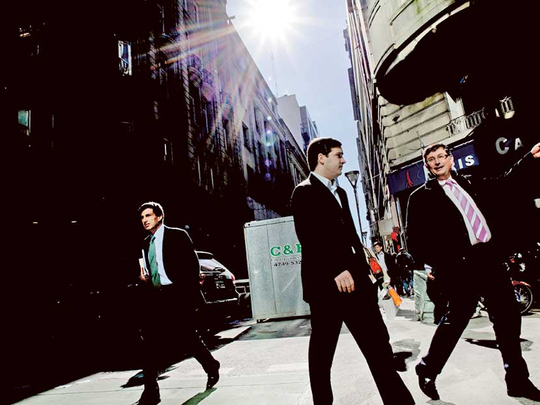
Buenos Aires: The Argentine capital, always aiming to be on top of the latest trends, is part of the wave of turning staid office culture into hubs of creativity through shared workspaces.
These workspaces, which are offices that freelancers share as a workplace, are found to foster useful interaction and creative activity. Many say that these places help them concentrate on their work better. Maybe it’s because of the Chinese takeout lunches they share, the ping-pong tournaments or the hammocks found dangling on some office terraces. These shared offices, which cut costs, generate a good work atmosphere and boost creative networks, are growing increasingly popular these days.
Some of these places act as a kind of second home or living room for freelancers and mobile workers who find in them an ideal space to develop and share interests with like-minded people. These offices often have lounge areas, open kitchens, sofas and “fun” zones. Besides being comfortable, these offices provide a space for the free flow of ideas as well as a private place at a table. Shared workplaces, which are often discreetly located inside restored or older buildings, suit the need of users who range from experienced professionals to “digital nomads” — the workers of the future.
Joint projects
In the Espacio Gamarra in the Parque Chas area of Buenos Aires, an old building has been converted to host a group of architects and graphic designers.
“We share data on competitions and suppliers and joint projects come up from time to time,” says Carolina Jaroslavsky, an architect at Umbral. She sits near graphic designers working for Estudio TIPA as well as another architecture firm Damero.
Everyone focuses on their own work, but “we agree that sharing helps us have a good time. The most interesting thing here is the diversity,” says Jaroslavsky, saying that the exchanges with co-workers liven the work atmosphere.
Some workplaces are more exclusive and only accept certain kinds of people. Manawa, a space in the Palermo SoHo district intended for creative types and entrepreneurs working in the arts, is one such place. “We don’t accept salespeople. And we prefer foreigners — the more cosmopolitan, the more enriching the atmosphere,” says Martin Nardone, a DJ, apparently unaware of the possibility of discrimination.
Creative energy
People working at Manawa include rock band managers, literary headhunters and employees of ZZK Records. “I concentrate better here and I’m more productive,” says Guillermo Arana, who shares a desk, Chinese meals and after-work drinks with a French architect, Alex Lyens.
Another workspace, DECK-co, was designed to foster creative energy among the workers. The design includes a “weave” panel that architecturally unifies the various private spots in the office while serving as a centrepiece.
The weaving concept ties in with DECK’s philosophy of “shared growth” and linking its users toward a “particular end,” says architect Vanesa Lijdens.
Another “decker,” the 27-year-old architect Virginia Micheloud, says she likes DECK’s design and comfort. “It allows me to separate work and life, belong to a stable community that brings security. It gives me a chance to meet people.” Above all, she adds, she gets feedback that allows her to advance her project.
These spaces provide not just shared living rooms, bars and kitchen facilities, but also messenger services and paid access to seminars. The five workspaces run by Urban Station provide workers with lockers, bike racks and a “Creativity Room” that contains giant rubber balls. These places share a common idea — that free association with like-minded people boosts creativity, and brings success.












